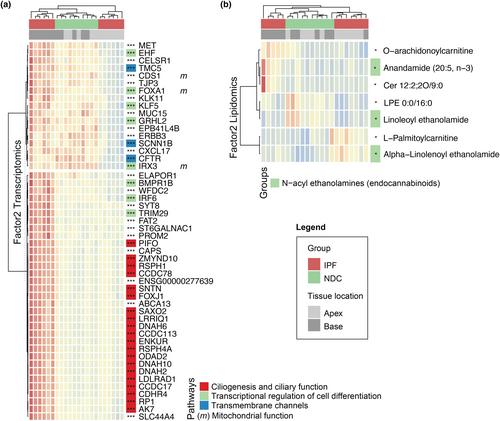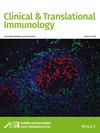Idiopathic pulmonary fibrosis (IPF) is a devastating progressive interstitial lung disease with poor outcomes. While decades of research have shed light on pathophysiological mechanisms associated with the disease, our understanding of the early molecular events driving IPF and its progression is limited. With this study, we aimed to model the leading edge of fibrosis using a data-driven approach.
Multiple omics modalities (transcriptomics, metabolomics and lipidomics) of healthy and IPF lung explants representing different stages of fibrosis were combined using an unbiased approach. Multi-Omics Factor Analysis of datasets revealed latent factors specifically linked with established fibrotic disease (Factor1) and disease progression (Factor2).
Features characterising Factor1 comprised well-established hallmarks of fibrotic disease such as defects in surfactant, epithelial–mesenchymal transition, extracellular matrix deposition, mitochondrial dysfunction and purine metabolism. Comparatively, Factor2 identified a signature revealing a nonlinear trajectory towards disease progression. Molecular features characterising Factor2 included genes related to transcriptional regulation of cell differentiation, ciliogenesis and a subset of lipids from the endocannabinoid class. Machine learning models, trained upon the top transcriptomics features of each factor, accurately predicted disease status and progression when tested on two independent datasets.
This multi-omics integrative approach has revealed a unique signature which may represent the inflection point in disease progression, representing a promising avenue for the identification of therapeutic targets aimed at addressing the progressive nature of the disease.



